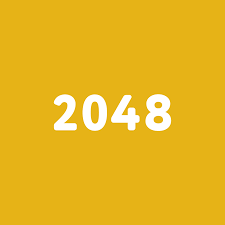Background
Digital games, being more dynamic, have a variety of ways to keep players engaged. According to the concept of flow, the challenge presented should match the player’s level of mastery to maintain engagement.
To explore how this experience varies across different digital games, I chose puzzles due to their educational value. Specifically, I focused on the game 2048, which has been widely researched.
Objectives
To compare the gaming experience of 2048:
- Over multiple attempts
- With different variations of the game
- Compared to other games
Research Question
How does the gaming experience vary for 8–10 year olds as they gain mastery over a game?
What is 2048?
In 2048, players slide numbered tiles on a grid to combine them and create a tile with the number 2048. Tiles are randomly generated and distributed uniformly across empty cells with each turn. The game ends when no legal moves are available.
Experienced players often use a monotonic snake-like pattern, placing the largest tile in a corner and arranging other tiles in decreasing order along rows or columns. This strategy allows for successive merges to form new maximum tiles.
Methodology
Participant
The participant was a 10-year-old from a Tier 1 city. The study was conducted with parental approval at the parent’s workplace under their supervision.
Games Selected
An iPad was used for the study. The top results for “math,” “puzzle,” “children,” and “learning” from the App Store were selected, resulting in six puzzles chosen for their complexity and educational value.
Game Evaluation
After a few attempts of each game, the child filled out a questionnaire rating the game on a scale of 1 to 5 based on:
- Mystery/Surprise
- Engagement
- Ease of Access
- Challenge
- Overall Playing Experience
The UI was also rated based on observation.
Procedure
The child was introduced to each game and the goal was briefly explained. Questions were asked during gameplay in an unstructured manner. Some buttons and actions were explained upon request, while others were left for the child to discover. After each game, the player rated the game.
Key Findings
- The learning curve flattened with each variation of 2048.
- Improving a personal high score was a significant motivator.
- CTA buttons for subscriptions (e.g., rewards, visual skins) distracted the user multiple times.
- The player preferred the game more as they became familiar with the gameplay.
- The player quickly learned the snake pattern strategy to achieve the largest tile in the corner.
- With new layouts like Hexa2048 (2x2x2), the player initially felt disoriented but quickly adapted.
- In “Make 10,” the player engaged in mental calculations and was motivated by in-game rewards.
- In “Brain Dots,” the player was driven by the challenge and autonomy, showing high engagement even when stuck.
Insights
- The score increased significantly on the third attempt due to mastering key strategies.
- 2048 was more engaging due to its smooth gameplay and clear rules, while Brain Dots showed higher interest and engagement due to its creative gameplay.
- The player exhibited autonomy, preferring to explore and learn independently.
- Visual progress as feedback is a strong motivator for self-improvement.
- Ratings can be biased based on the previous game played, with better games receiving higher ratings due to comparison.
Conclusion
Puzzles are effective in skill acquisition, making repetitive work engaging and improving skills over time. The player experienced flow upon mastering key strategies in 2048, sustained by adding more obstacles to increase the challenge. Factors like rewards, mystery, and simplicity also significantly impact engagement, which varies across different gameplays.
Learnings
- The subject’s environment includes distractions from parental involvement, which can provide unexpected insights.
- Building rapport with younger participants is crucial for unbiased insights, as children are more open when they feel part of the research team.

